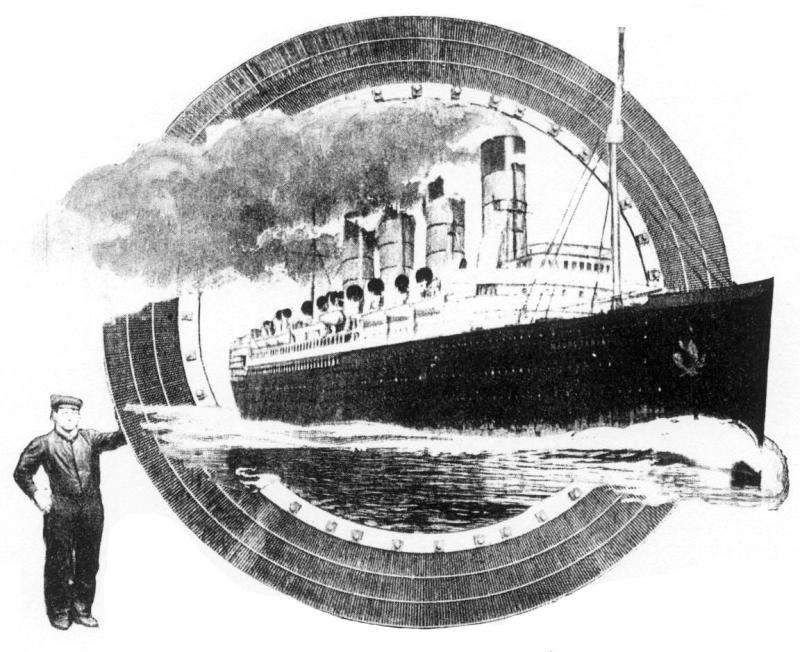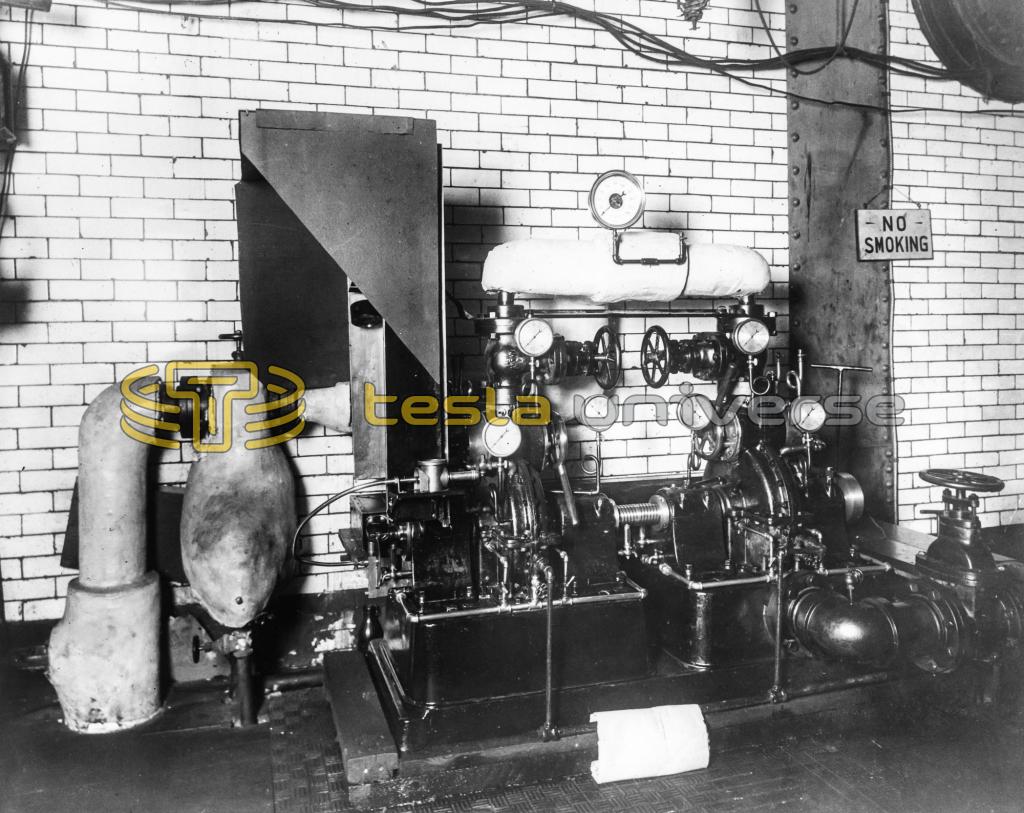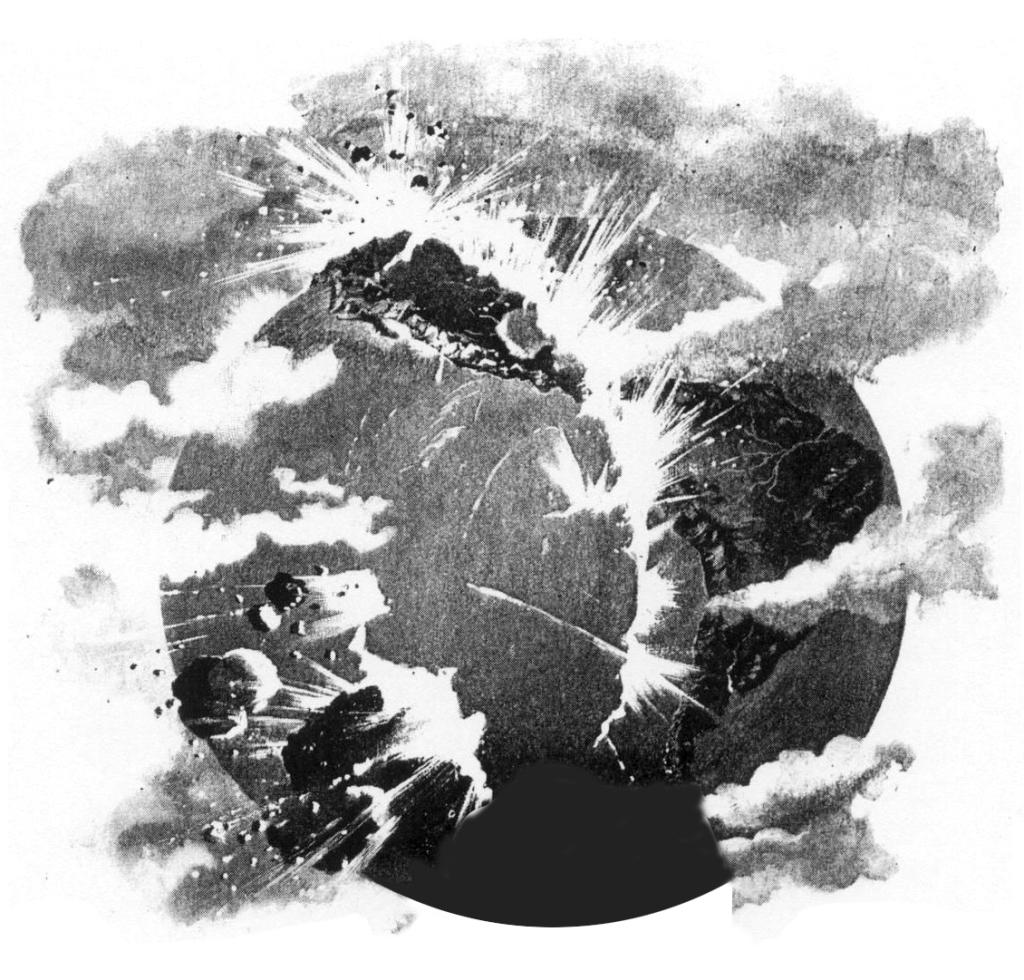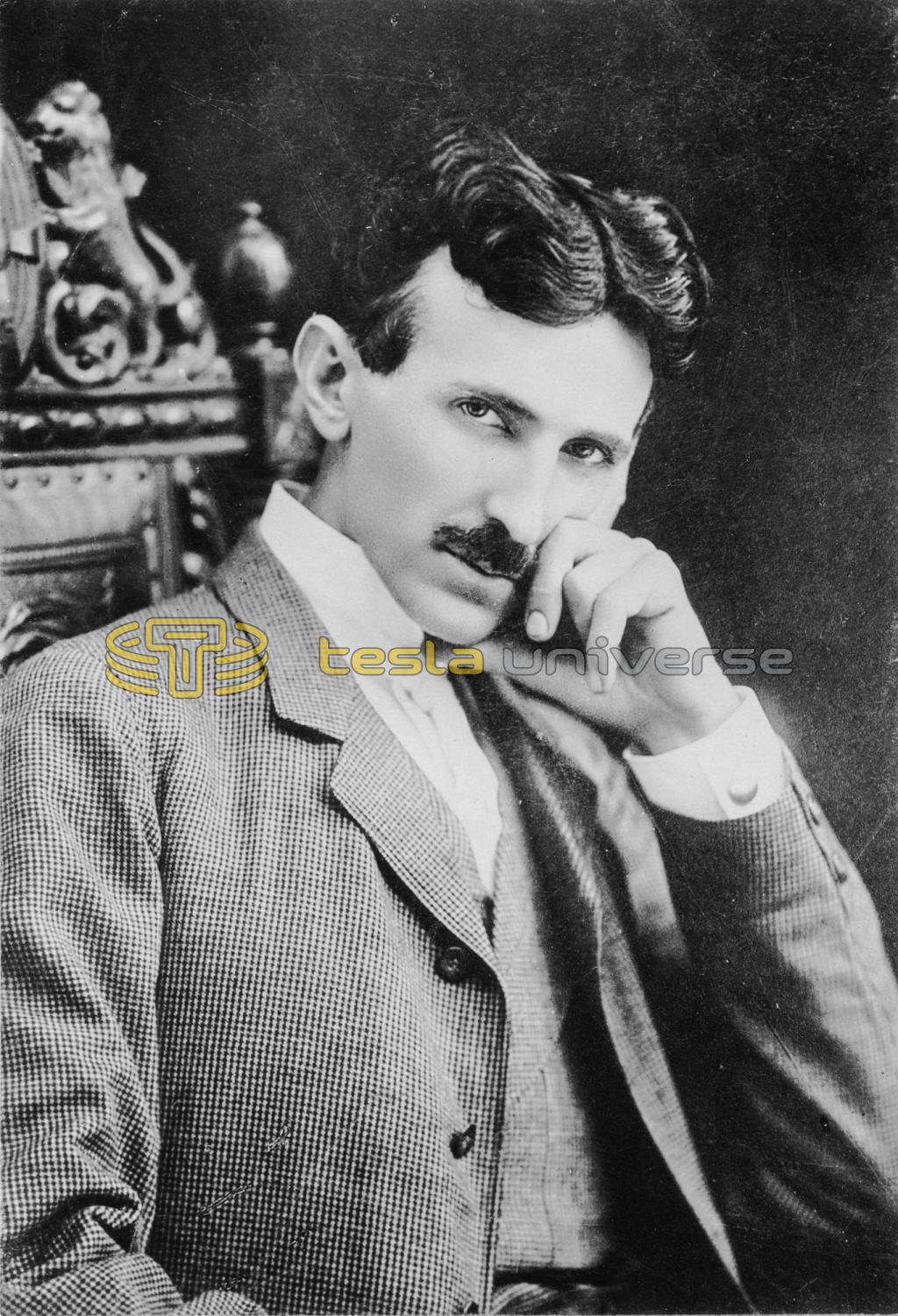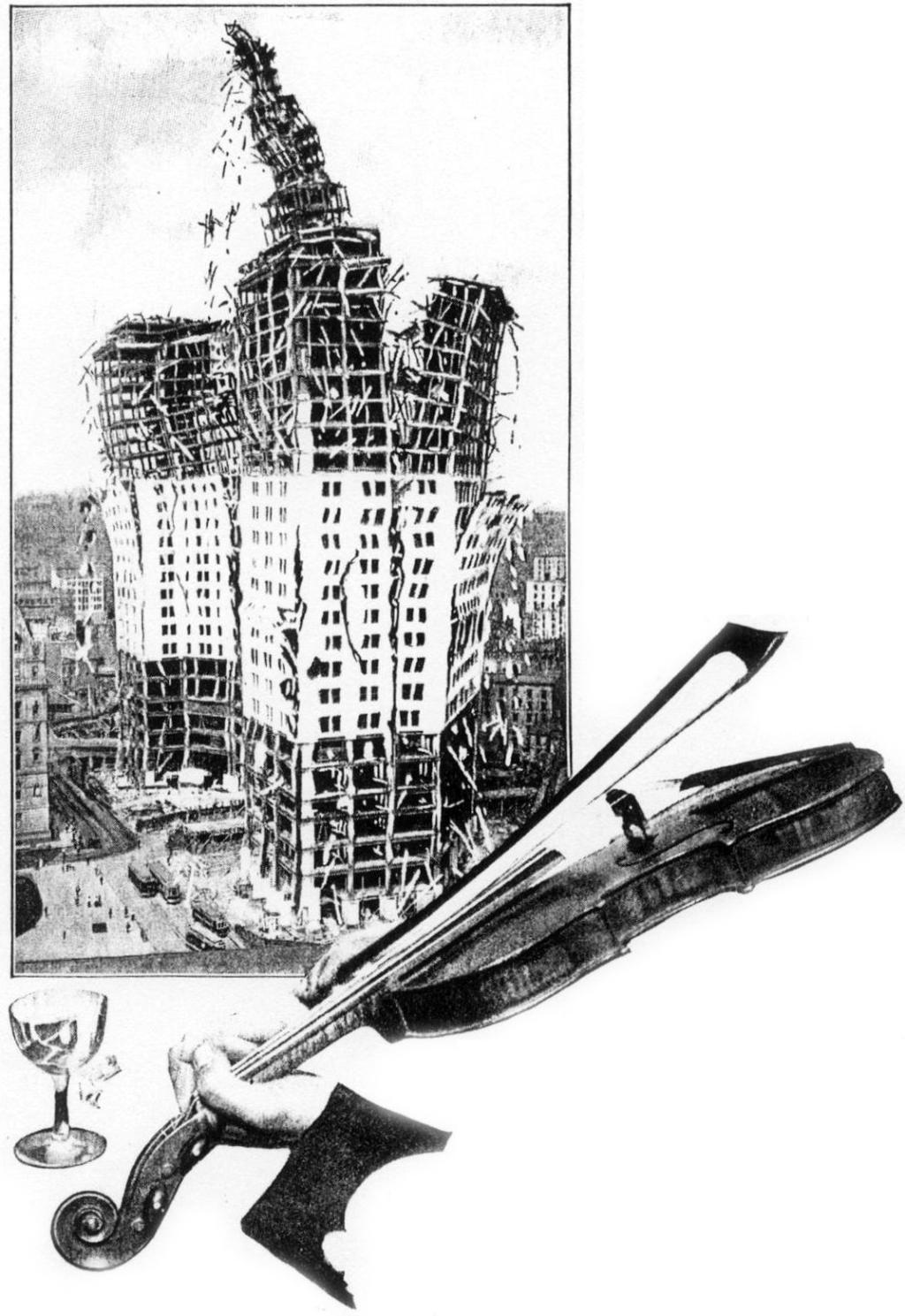
Nikola Tesla Articles
Nikola Tesla, Dreamer
His Three-Day Ship to Europe and His Scheme to Split the Earth
The man who lives ahead of his age is called a dreamer. Such a man is Tesla. He predicted wireless telegraphy long before it came about, and he gave the world the alternating current without which long-distance transmission of electric power would be impossible. Tesla is a man you will be glad to meet. His dreams are fascinating even if -
Alone man dines nightly in the Rose Room at the Waldorf. For eighteen years, he has sat at the same table. The table, which stands near the wall, is just large enough for two; but it is never set for two. It is never set for more than one - and that one is Nikola Tesla.
Nikola Tesla is fifty-nine years old. Where he keeps his years, no one knows. They are not in his face, for his face looks like forty. They are not in his hair, for his hair is black. If they are anywhere, they are in his eyes, for his eyes are sad.
This lone man, who always dines across from a vacant place, has given to the world a long series of wonderful inventions. Tesla’s system of electric power transmission is used by all the world, and he has a new turbine which, he says, could drive the Lusitania across the Atlantic at the rate of fifty miles an hour.
“That means less than three days to cross the Atlantic,” he continued, “upon the same coal supply that is now used. But I have a ship in mind that my turbine could put across the Atlantic in sixteen hours.
“But the world need not wait for the fifty-miles-an-hour ship. The turbine that can drive it is here. It is a simple matter of mathematics. The best type of reciprocating engine - a quadruple expansion - yields only 51 per cent. of the energy that is contained in the steam. The turbines that drive the Lusitania and the Mauretania yield 62 per cent. My turbine yields 99 per cent. This it is enabled to do because the steam goes around and around the spiral circuits, imparting energy all along its track, while in the old type of turbine, the steam goes around but once and, when it escapes, still contains much energy.”
The superior efficiency that Tesla claims for his turbine is not sufficient, of course, to bring the two-and-a-half day ship. Adding 60 per cent. to power does not add 60 per cent. to speed. The law of diminishing returns prevents that. But Tesla contends that his turbine can as well be driven by steam created by gas explosions, which give enormous pressures.
This suggested internal combustion engines and aeroplanes.
“I will guarantee,” said Tesla, “to put my turbine into a Wright biplane and drive it 200 miles an hour. That is to say; the turbine will furnish sufficient power. Of course, no one could sit in a Wright biplane going 200 miles an hour. I expect to develop a new type of flying-machine that my turbine will drive at almost the speed of a bullet.”
The fact that Tesla dreams of such speed is not, of course, conclusive proof that such speed will soon be attained. But it should be remembered that some of Tesla’s dreams have come true. I myself have seen a clipping from a New York newspaper bearing date of 1893, in which Nikola Tesla said:
“If I cannot send a message to a ship at sea, send it without wires, and make the message understood to those aboard the ship, I am willing to lay my head on the block.”
No, he was not the first to send such a message. That is true. Marconi, five years later, sent the first such message. But Tesla, years before Marconi’s achievement, obtained American patents upon a system of wireless telegraphy.
While on the subject of dreams, here is a Tesla dream that, so far as I know, has never been equaled by Tesla, or by any other human being, since the world began.
Every one knows that a note upon a violin will sometimes shatter a wineglass in the same room. Every one knows that a note upon a flute will set some string in a piano softly to humming. But every one does not know the reason that underlies both facts. This is the reason:
The violin and the flute each set the air to vibrating. The wineglass and the piano-string were imperceptibly vibrating before either the violin or the flute sounded, precisely as all matter is always imperceptibly vibrating in response to the multitude of noises and shocks in the world. But the vibrations of the violin’s note happened to coincide with the frequency of the vibrations of the wineglass, as the vibrations produced by the flute happened to coincide with the vibrations of this particular piano-string. And, coinciding in frequency, as they happened to do, they produced the same acceleration that a boy produces when he swings some one in an old-fashioned swing. The person in the swing may weigh 200 pounds and the boy may weigh but 50 and may push but a pound. But if he times his pushes to coincide with the turn of the swing from him and keeps adding a pound each time, he will eventually have to stop to avoid throwing out the occupant of the swing. While, on the other hand, if he did not time to coincide with the movements of the swing - in other words, if he pushed a pound against the returning swing each time it came back - the swing would soon stop.
The wineglass that is broken by a violin’s note is broken because the vibrations of the air that are produced by the violin happen to be of the same frequency as the vibrations of the glass. In the beginning, the glass is expanding and contracting only within infinitesimally small limits. But each time that the glass begins to contract, the vibration produced by the violin gives it a little push. After thousands or millions of such pushes, the expansion and contraction of the glass are so increased that the glass breaks.
The principle embodied in this experiment interested Tesla, and he determined to try it upon a larger scale. He ordered from a steel company a steel link, two feet long and two inches thick. He was careful to specify that the steel should be of the best quality. As a matter of fact, the link was strong enough to bear a weight of hundreds of tons.
Tesla fastened to this link an electric vibrator, no larger than an alarm-clock, but so constructed that the frequency of the vibrations could be altered at will. He set the vibrator to going and then began to vary the vibrations for the purpose of getting the vibrator in “tune” with the link. For a long time, nothing happened - the vibrations of the link and of the machine did not chance to coincide. But at last he got them together, the great steel link began to tremble, increased its trembling until it dilated and contracted like a beating heart - and finally broke!
Sledge hammers could not have done it; crowbars could not have done it, but a fusillade of taps, no one of which would have harmed a baby, did it.
Tesla was pleased. He had learned something. He wanted to learn more. He put his little vibrator in his coat pocket and went out to hunt a half-erected steel building. Down in the Wall Street district, he found one - ten stories of steel framework without a brick or a stone laid around it. He clamped his vibrator to one of the beams, and fussed with the adjustment until he got it.
“In a few minutes,” he said, “I could feel the beam trembling. Gradually, the trembling increased in intensity and extended throughout the whole great mass of steel. Finally, the structure began to creak and weave, and the steel-workers came to the ground panic-stricken, believing that there had been an earthquake. Rumors spread that the building was about to fall, and the police reserves were called out. Before anything serious happened, I took off the vibrator, put it in my pocket and went away. But if I had kept on ten minutes more, I could have laid that building flat in the street. And, with the same vibrator, I could drop Brooklyn Bridge into the East River in less than an hour.”
Now comes the “dream” - or whatever it is.
Tesla says that he can split the earth in the same way - split it as a boy would split an apple - and forever end the career of man.
This seems like quite a large order - but see what he says about it.
“The vibrations of the earth,” said he, “have a periodicity of approximately one hour and forty-nine minutes. That is to say, if I strike the earth this instant, a wave of contraction goes through it that will come back in one hour and forty-nine minutes in the form of expansion. As a matter of fact, the earth, like everything else, is in a constant state of vibration. It is constantly contracting and expanding.
“Now, suppose that at the precise moment when it begins to contract, I explode a ton of dynamite. That accelerates the contraction and, in one hour and forty-nine minutes, there comes an equally accelerated wave of expansion. When the wave of expansion ebbs, suppose I explode another ton of dynamite, thus further increasing the wave of contraction. And, suppose this performance be repeated, time after time. Is there any doubt as to what would happen? There is no doubt in my mind. The earth would be split in two. For the first time in man’s history, he has the knowledge with which he may interfere with cosmic processes.”
I asked Tesla how long he thought it would take him to split the earth in two. He said he didn’t know. Months might be required; perhaps a year or two.
“But in a few weeks,” he said, “I could set the earth’s crust into such a state of vibration that it would rise and fall hundreds of feet, throwing rivers out of their beds, wrecking buildings, and practically destroying civilization.
“The principle cannot fail. It is as powerful when applied to the earth as it is when applied to a wineglass, a swing, or a steel link. Any one who doubts should only bear in mind the illustration of the swing. A small boy, by each time adding a pound to the force with which a 200-pound man swings, can soon set the man swinging with the force of 500 pounds. It is necessary only to keep adding a little force at the right time.”
There may be flaws in this theory. Others may see them. I don’t. I know that some steamship companies proceed upon this theory - reversing its application, by the way - to keep their steamships in a relative state of equilibrium. Steamships sometimes roll more violently than the ocean rolls, merely because their movements become attuned to the movements of the waves. This is offset by a system of interior water-tanks, back and forth through which water is forced out of tune with the waves, thus neutralizing them. The theory works aboard a ship.
And the possibility that it might work if applied to the earth is sufficient to stimulate the imagination, even if the improbability of its application be sufficient to allay one’s fears.
